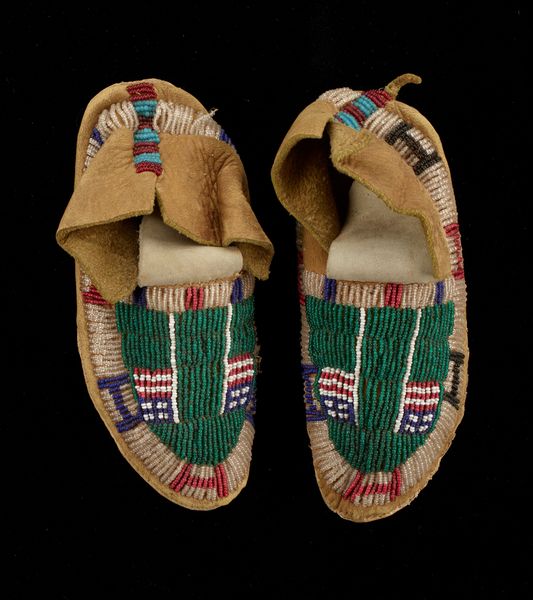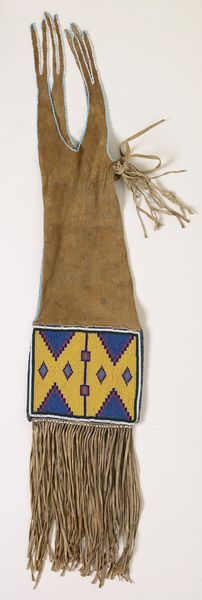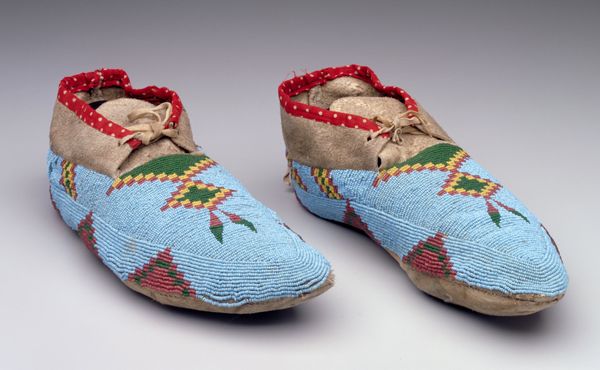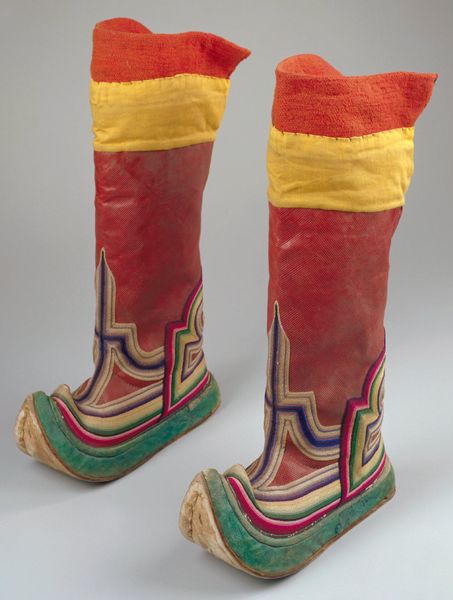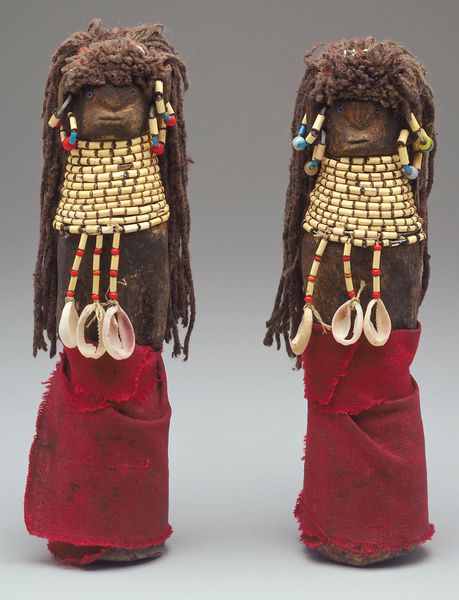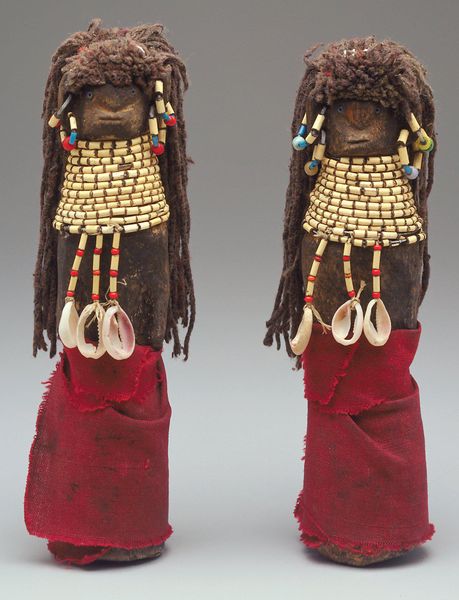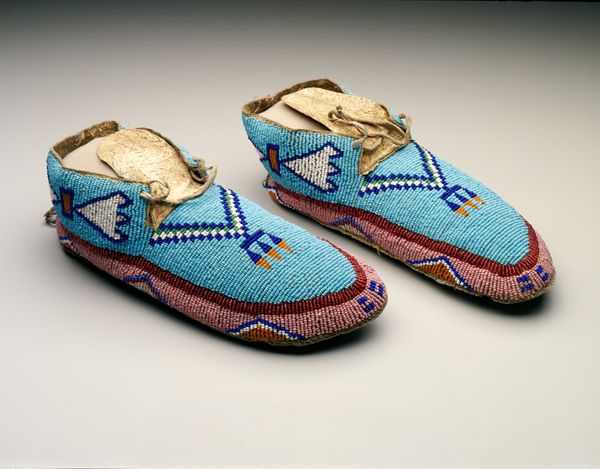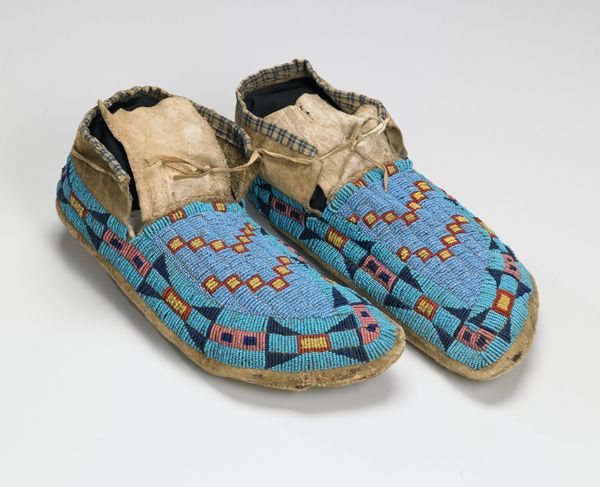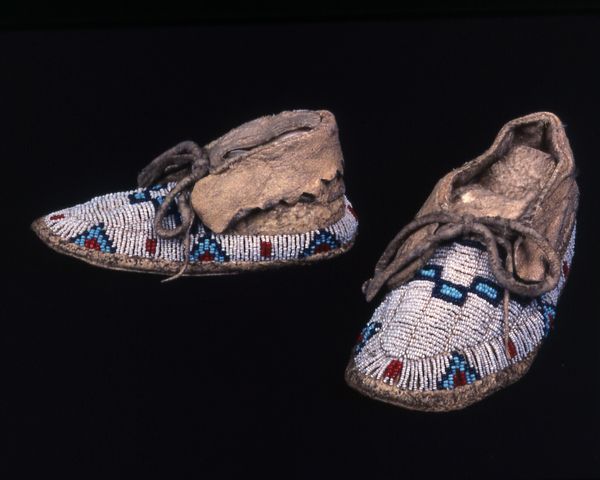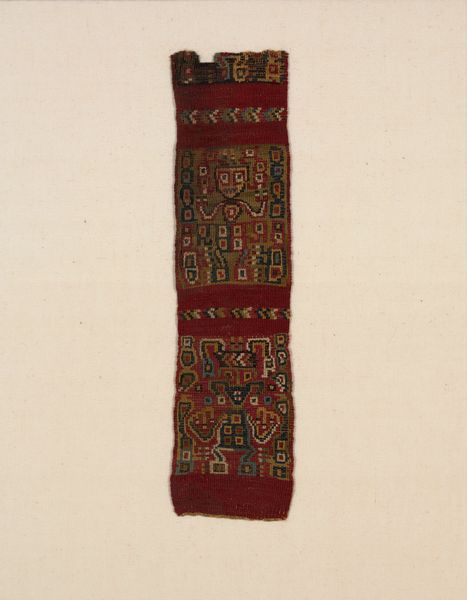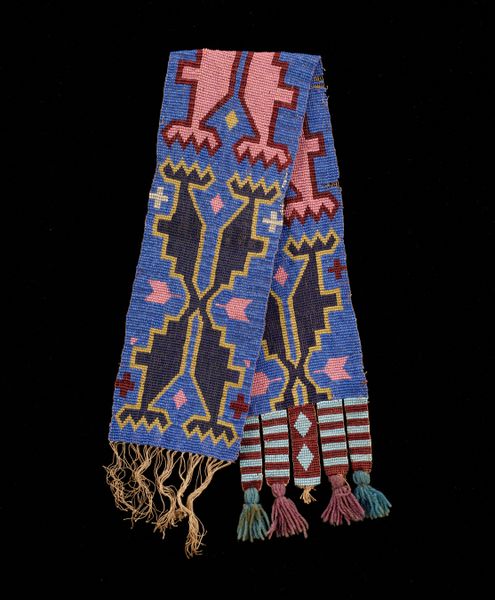
fibre-art, textile
#
fibre-art
#
textile
#
indigenous-americas
Copyright: Public Domain
These leggings were made by a Tsistsistas (Cheyenne) artist with tanned hide and glass beads. Hide provides not only the shape of the leggings but also the texture and the surface, which has been softened through labor-intensive tanning, and further embellished with colorful beads. The beads are carefully stitched in geometric patterns, adding weight and dimension, contrasting with the supple hide. The process involved precise handwork, reflecting the maker's skill and patience. The beads themselves, originating from European trade, represent a complex intersection of indigenous artistry and global exchange. Consider that the creation of these leggings speaks to a deep understanding of materials, and making as an expression of cultural identity. By appreciating the artistry and labor involved, we gain insight into the cultural significance of these objects, and the ways craft traditions can both adapt to, and resist, broader economic forces.
Comments
minneapolisinstituteofart almost 2 years ago
⋮
Among the Tsistsistas, women traditionally worked hides for clothing and other necessities. Designs were then added by members of exclusive women's societies who regulated their meanings and use. The beaded lines here, for example, traditionally represented the war honors of the wearer or her family, a motif repeated often on men's shirts and leggings. However, by the time these leggings were created the symbolism of the lines was likely used more for their decorative effect. The motif blends tradition and art, balancing the geometric symmetry of the beading with the contrasting colors and repeating borders of the lane-stitched design.
Join the conversation
Join millions of artists and users on Artera today and experience the ultimate creative platform.
